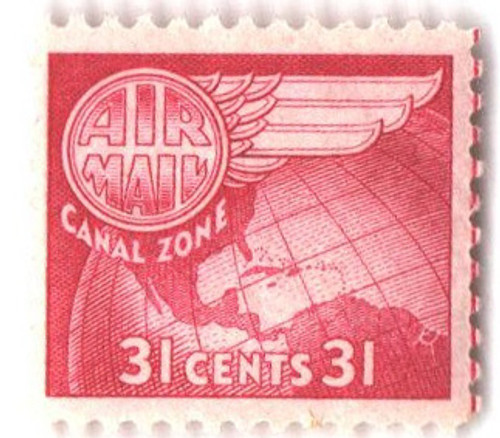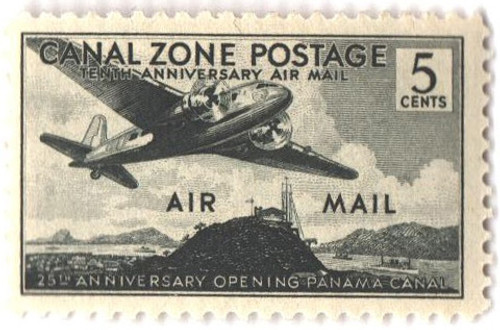
# CZC35 - 1963 15c Canal Zone Airmail - Progress, gray, green dark ultra
Alliance For Progress
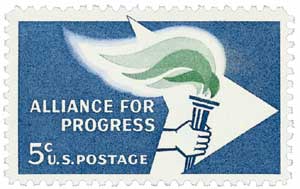
On March 13, 1961, President John F. Kennedy announced the Alliance for Progress to provide economic and social aid to Latin America.
When John F. Kennedy first took office in January 1961, relations between the US and Latin America were at a record low. At the time, the republics in Latin America were unsatisfied with the assistance they received after World War II. They felt that because they had increased their production during the war and kept prices low, they should receive economic assistance similar to that being given in Europe and Japan. In addition to these tensions, the rise of communism was a growing threat.
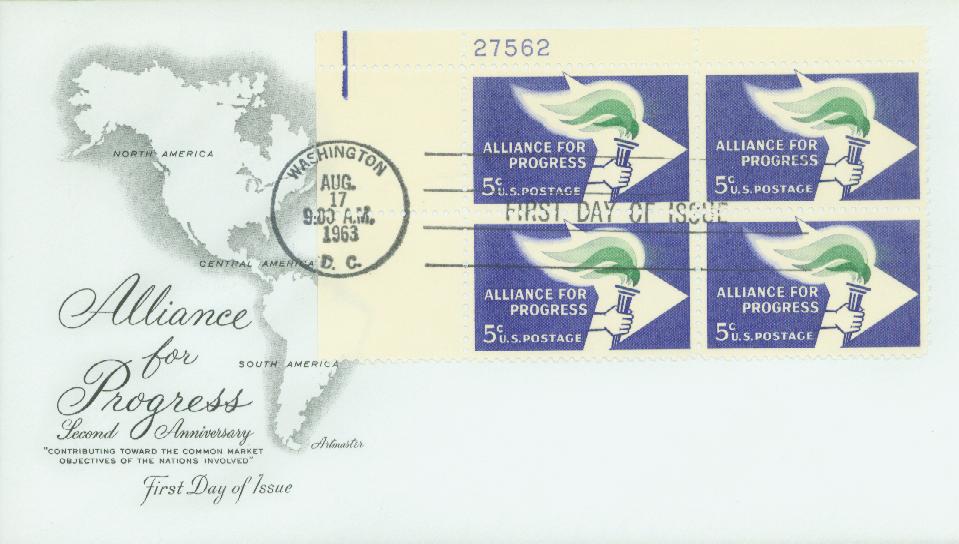
In his inaugural address, President Kennedy attempted to address the situation, saying, “To our sister republics south of our border, we offer a special pledge: to convert our good words into good deeds, in a new alliance for progress, to assist free men and free governments in casting off the chains of poverty.”
Then on March 13, 1961, Kennedy invited Latin American diplomats to a reception at the White House where he introduced the Alliance for Progress. The Alliance had several goals, all designed to improve economic relations between North and South America. Along with proposals for the future, Kennedy promised to immediately increase the US food-for-peace emergency program, stating, “hungry men and women cannot wait for economic discussions … their need is urgent, and their hunger rests heavily on the conscience of their fellow men.”
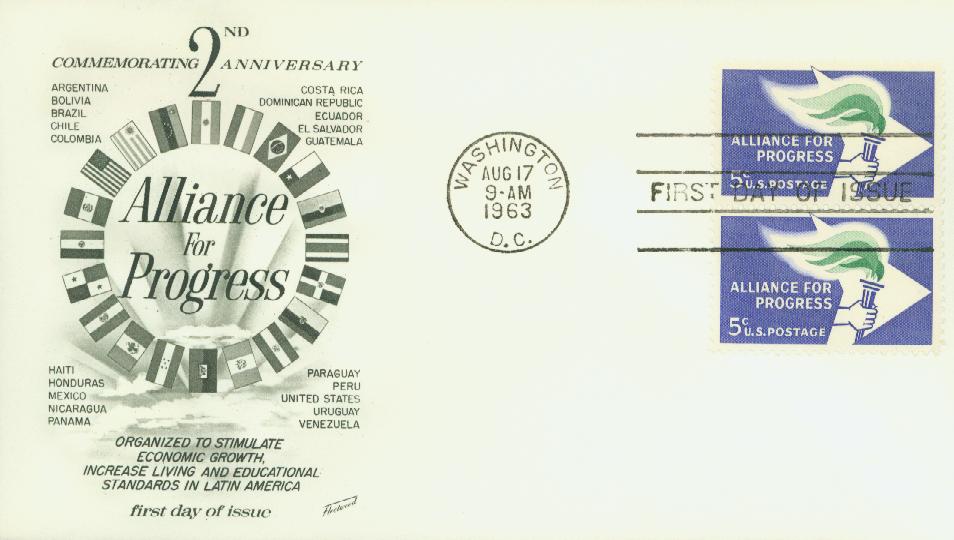
That August, the United States signed the Alliance for Progress with 19 Latin American countries. This important piece of legislation established a cooperative program that promoted economic and social development in Latin America. Later, other Latin American countries joined the alliance.
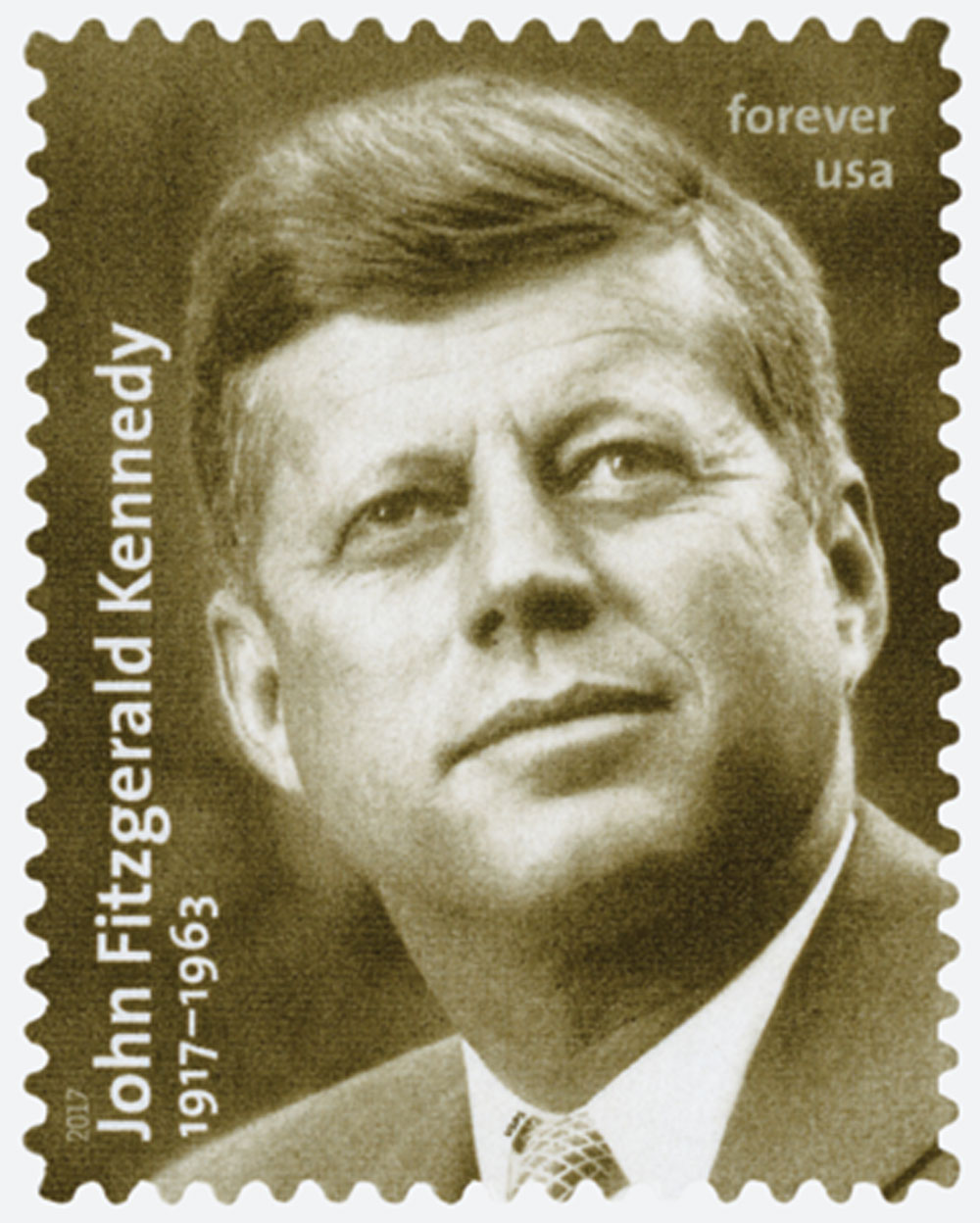
Some of the main economic objectives of the Alliance for Progress were to raise national incomes and distribute them more evenly, accelerate industrialization and agricultural productivity, stabilize prices, and increase exports. Social objectives included improving education, reducing illiteracy, improving health and nutrition, and increasing trained medical personnel. The program would also establish democratic governments, which was the key issue, as it underlined Kennedy’s goal of strengthening regional governments so they would not move to communism.
The Alliance represented JFK’s ideal of peaceful diplomacy to oppose the rising concerns leading up to the Cuban Missile Crisis. The 10-year-plan was to be fueled by $80 billion from Latin American countries, and $20 billion pledged by America over the next decade.
US aid to Latin America increased dramatically in the first years to $1.4 billion per year. In spite of the investment, the program did not achieve the success Kennedy had hoped for. The results were mixed, partly because of Kennedy’s assassination. The administrations that followed were not as dedicated to supporting the Alliance.
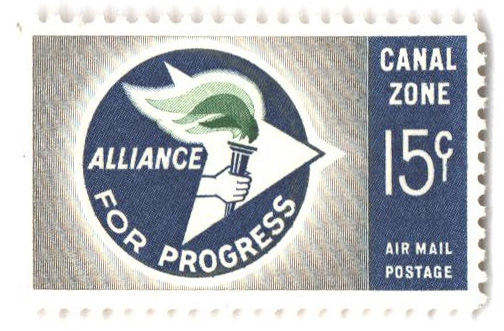
The positive results were a reduction in adult illiteracy and the construction of health clinics. Additionally, there was a small amount of income growth – the goal of 2.5% per capita economic growth was exceeded by over 1%.
Although the United States contributed approximately $11 million to the Alliance for Progress over 10 years, the high birth rate was a factor in causing unemployment to keep rising and the housing shortage continued. The aspect of the alliance that was seen as the biggest failure was the replacement of 13 constitutional governments with military dictatorships.
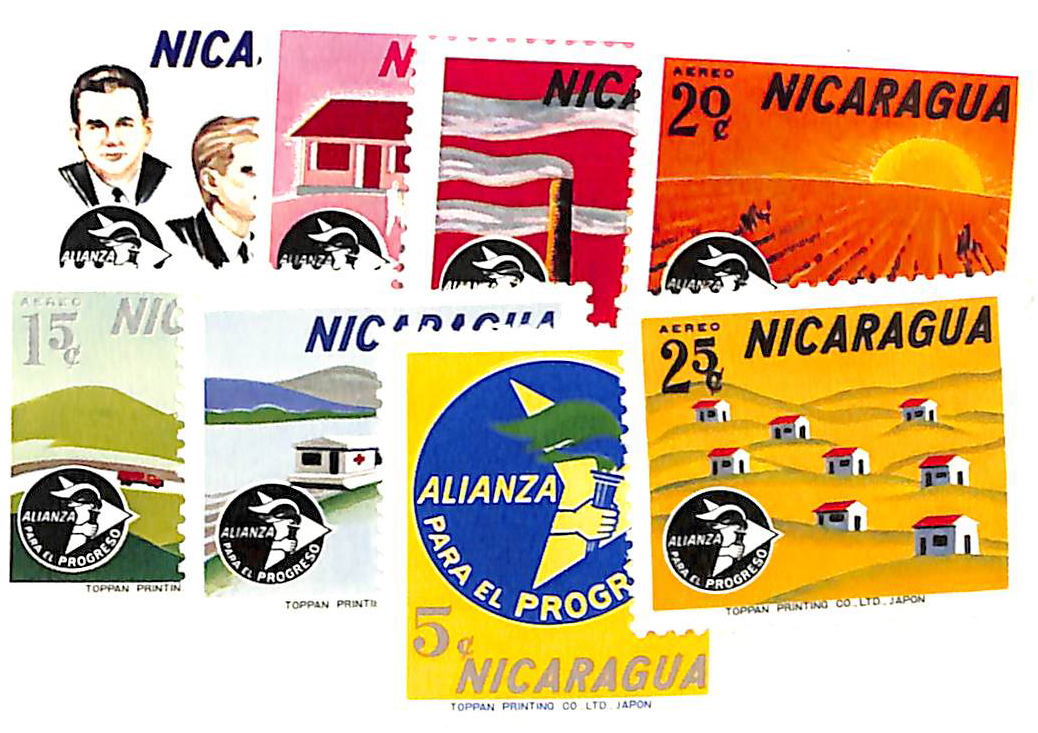
By the early 1970s, the Alliance for Progress was under fire from people of every political party. Although aid was extended by several international organizations, the United States stopped contributing to the program.
Click here to read Kennedy’s Alliance for Progress speech from this day in 1961.
Alliance For Progress

On March 13, 1961, President John F. Kennedy announced the Alliance for Progress to provide economic and social aid to Latin America.
When John F. Kennedy first took office in January 1961, relations between the US and Latin America were at a record low. At the time, the republics in Latin America were unsatisfied with the assistance they received after World War II. They felt that because they had increased their production during the war and kept prices low, they should receive economic assistance similar to that being given in Europe and Japan. In addition to these tensions, the rise of communism was a growing threat.

In his inaugural address, President Kennedy attempted to address the situation, saying, “To our sister republics south of our border, we offer a special pledge: to convert our good words into good deeds, in a new alliance for progress, to assist free men and free governments in casting off the chains of poverty.”
Then on March 13, 1961, Kennedy invited Latin American diplomats to a reception at the White House where he introduced the Alliance for Progress. The Alliance had several goals, all designed to improve economic relations between North and South America. Along with proposals for the future, Kennedy promised to immediately increase the US food-for-peace emergency program, stating, “hungry men and women cannot wait for economic discussions … their need is urgent, and their hunger rests heavily on the conscience of their fellow men.”

That August, the United States signed the Alliance for Progress with 19 Latin American countries. This important piece of legislation established a cooperative program that promoted economic and social development in Latin America. Later, other Latin American countries joined the alliance.

Some of the main economic objectives of the Alliance for Progress were to raise national incomes and distribute them more evenly, accelerate industrialization and agricultural productivity, stabilize prices, and increase exports. Social objectives included improving education, reducing illiteracy, improving health and nutrition, and increasing trained medical personnel. The program would also establish democratic governments, which was the key issue, as it underlined Kennedy’s goal of strengthening regional governments so they would not move to communism.
The Alliance represented JFK’s ideal of peaceful diplomacy to oppose the rising concerns leading up to the Cuban Missile Crisis. The 10-year-plan was to be fueled by $80 billion from Latin American countries, and $20 billion pledged by America over the next decade.
US aid to Latin America increased dramatically in the first years to $1.4 billion per year. In spite of the investment, the program did not achieve the success Kennedy had hoped for. The results were mixed, partly because of Kennedy’s assassination. The administrations that followed were not as dedicated to supporting the Alliance.

The positive results were a reduction in adult illiteracy and the construction of health clinics. Additionally, there was a small amount of income growth – the goal of 2.5% per capita economic growth was exceeded by over 1%.
Although the United States contributed approximately $11 million to the Alliance for Progress over 10 years, the high birth rate was a factor in causing unemployment to keep rising and the housing shortage continued. The aspect of the alliance that was seen as the biggest failure was the replacement of 13 constitutional governments with military dictatorships.

By the early 1970s, the Alliance for Progress was under fire from people of every political party. Although aid was extended by several international organizations, the United States stopped contributing to the program.
Click here to read Kennedy’s Alliance for Progress speech from this day in 1961.











